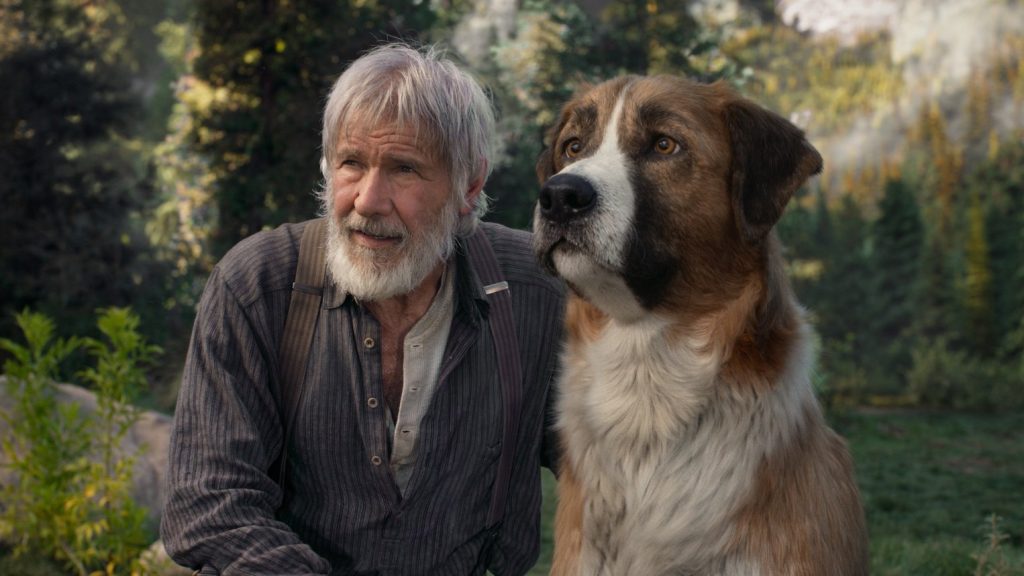The Call of the Wild will be the first encounter for some viewers (including this one) with the Disney-owned 20th Century Studios – formerly 20th Century Fox – and its awkwardly truncated logo. It feels like an attempt to claim nothing has really changed, that everything’s the same except for the name. If that intro were in front of, say, an X-Men movie, or an Alita: Battle Angel sequel, I might believe it. The Call of the Wild, however, feels like a very Disney movie, at home on Disney+ next to the likes of Togo or Iron Will. Its existence lends credence to the idea that one company with dominant ownership over what we see will result in a homogenous market, where releases exude an identical amount of blandness.
It’s probably unfair to put such an ominous label on a weak February release, but it’s hard to shake the feeling that were The Call of the Wild produced pre-Fox buyout, Disney’s name would’ve been on the poster. It’s aimed squarely at a family audience, though there’s quite a bit of content – violence, imminent peril, and the overt implication of animal abuse, to name some – that feels inappropriate for younger audiences. This is a movie for no one, except perhaps hardcore dog lovers for whom the quantity of animal content trumps the quality.
An adaptation of the Jack London novel, The Call of the Wild follows Buck, a dog who begins life as the spoiled pet of a judge, then is dognapped and brought to Alaska. Buck becomes part of a team pulling a mail sled, working for a good-natured mailman (Omar Sy), and his wife (Cara Gee). Later, Buck and the other dogs are bought by a cruel rich boy (Dan Stevens) and his wife (Karen Gillan), looking for gold and adventure in the Yukon. Buck is saved by John Thornton (Harrison Ford), a man living in isolation following the death of his son. John and Buck go on an adventure that helps John process his grief, and brings Buck in touch with his ancient, wild animal roots.
Throughout its runtime, The Call of the Wild struggles to find a consistent tone, switching between cute animal shenanigans and a perilous setting. Buck and his rotating series of canine friends are animated; Buck is brought to life by choreographer and motion capture performer Terry Notary. The movie’s use of the character is similarly cartoonish – fitting, since the film’s director, Chris Sanders, comes from an animation background (he got his start at Disney, in case you’re wondering). Buck bounds around every scene he’s in, creating exaggerated imprints on beds, knocking over furniture and upending tables full of food. He’s a character made for kids to enjoy.
The world Buck’s placed in, however, requires a more serious approach. His experience in the Yukon involves avalanches, a near-fatal fall through a frozen river, animal cruelty both implied and overt, and murder. At one point, Buck protects Ford by carrying Stevens’ mustache-twirling villain, Hal, into a burning building and leaving him there to die. That’s a big swing, considering just moments before, Buck was lifting gold nuggets the size of ostrich eggs out of a river, eager for Ford’s approval. The movie’s moments of kid-friendly humor are frequently followed by harrowing turns, with barely anything to temper the transition.
The Call of the Wild isn’t offensively bad. For all the mixed messages the movie sends, Buck’s expressiveness is sweet, and some of the human characters are sympathetic. However, it’s also not very good, and doesn’t leave an impression beyond a general sense of emotional confusion. While not unusual for a movie released in the middle of a winter dumping ground, it does raise a few questions over what Disney’s plans are for the future of the studio it’s bought. The Call of the Wild suggests 20th Century Studios could just become a repository for Disney’s middling family-friendly releases. Hopefully that won’t be the case, but the evidence so far isn’t very promising.
C-
“The Call of the Wild” is in theaters Friday.

